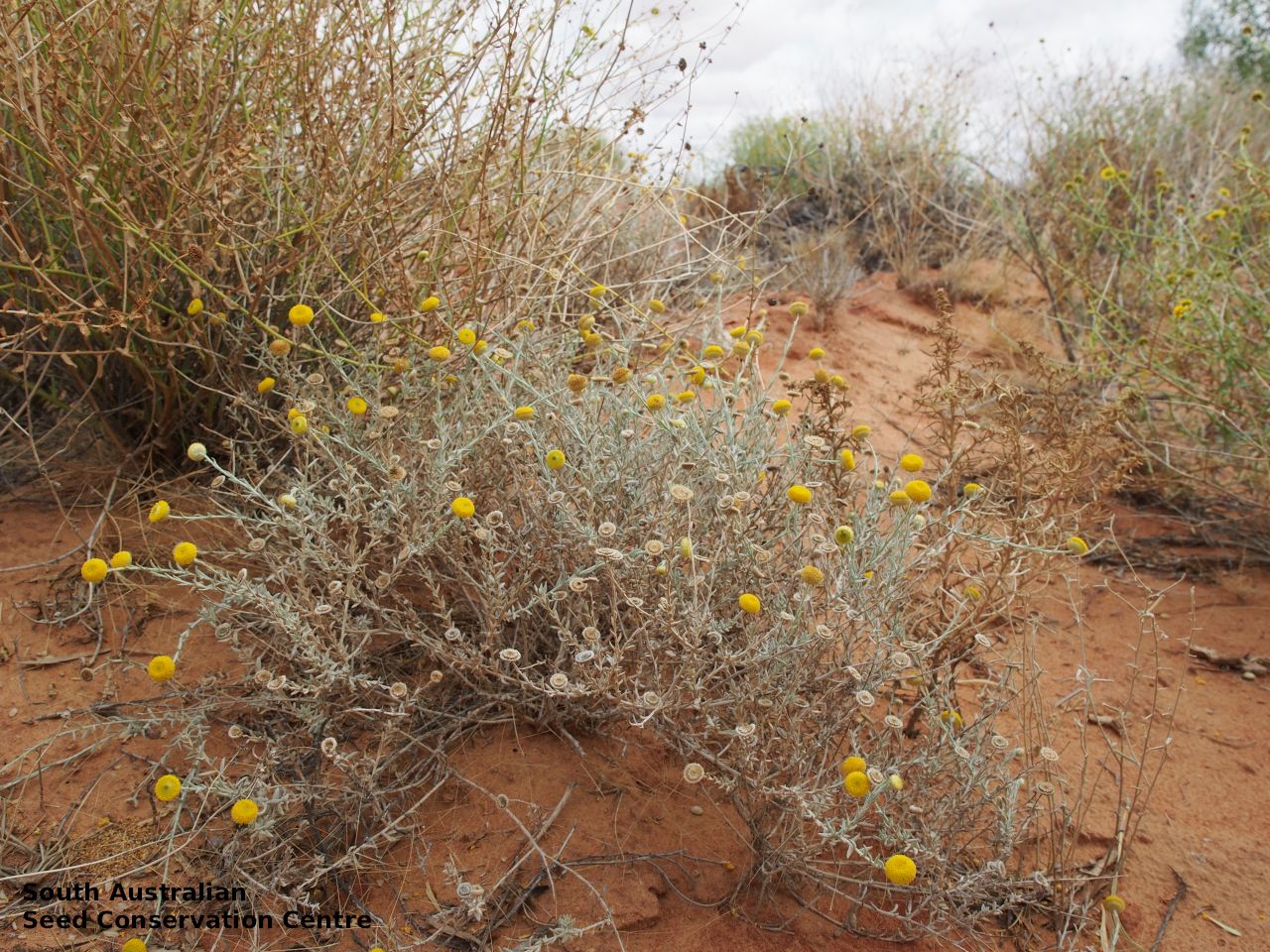
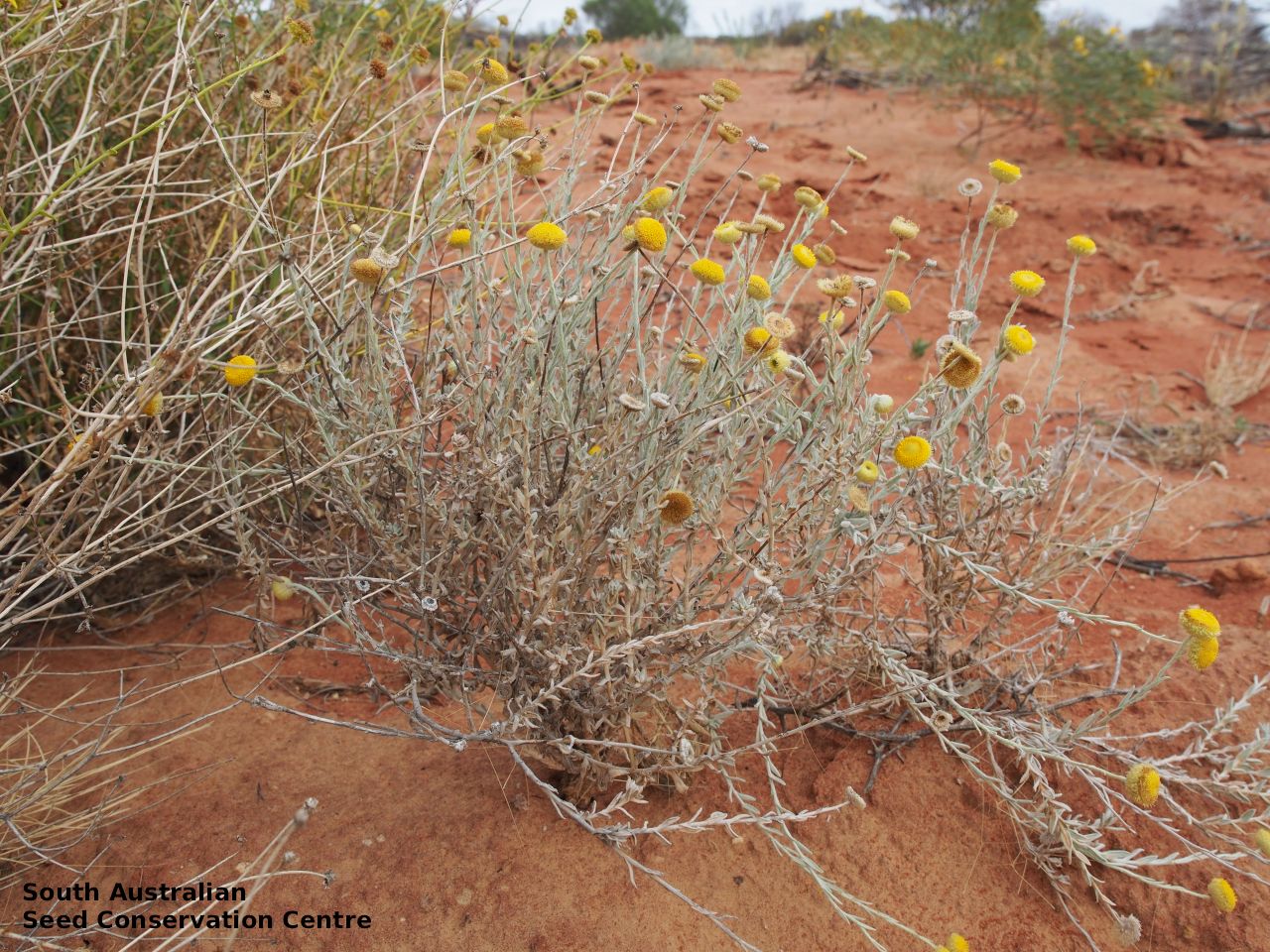
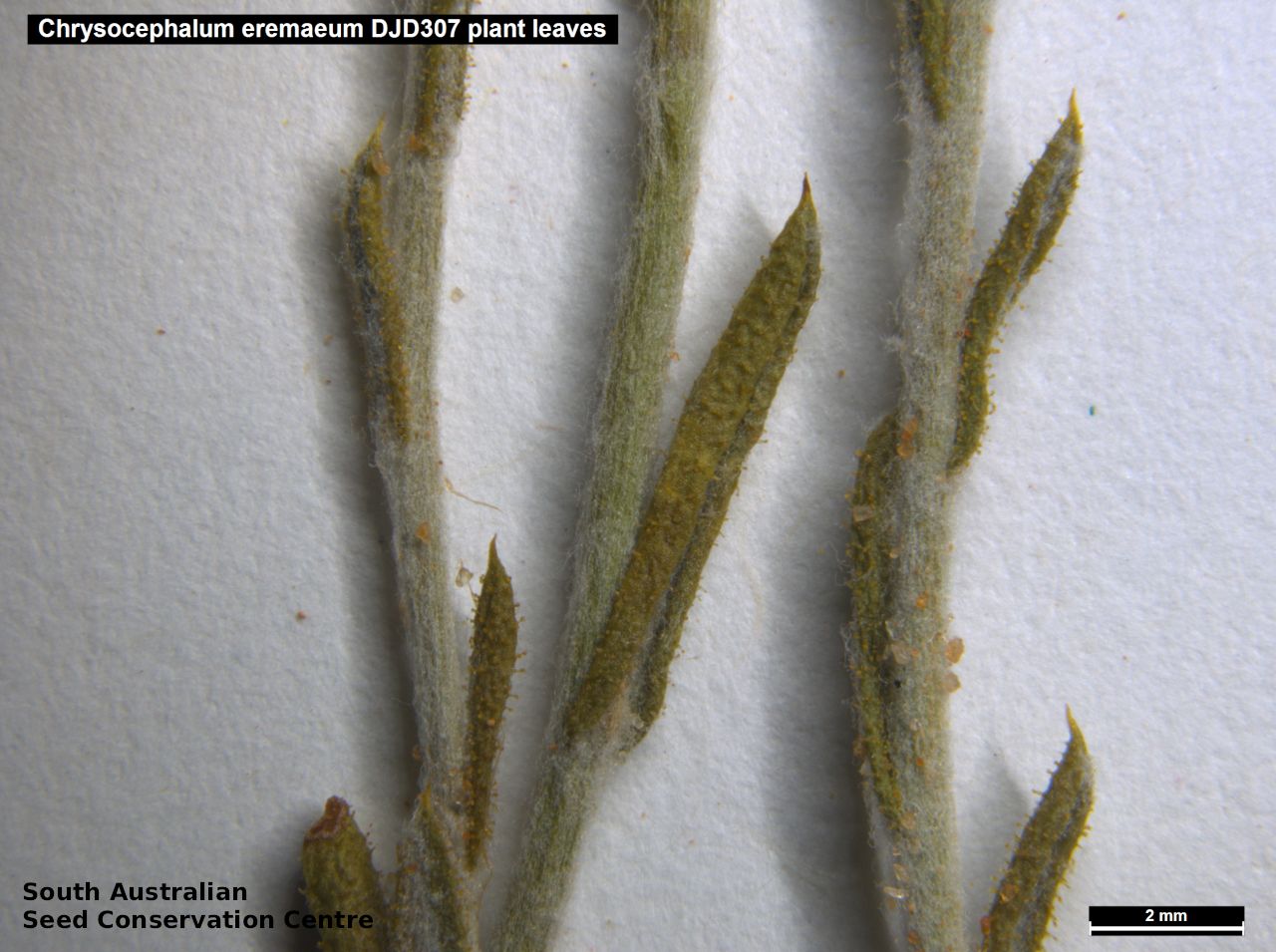
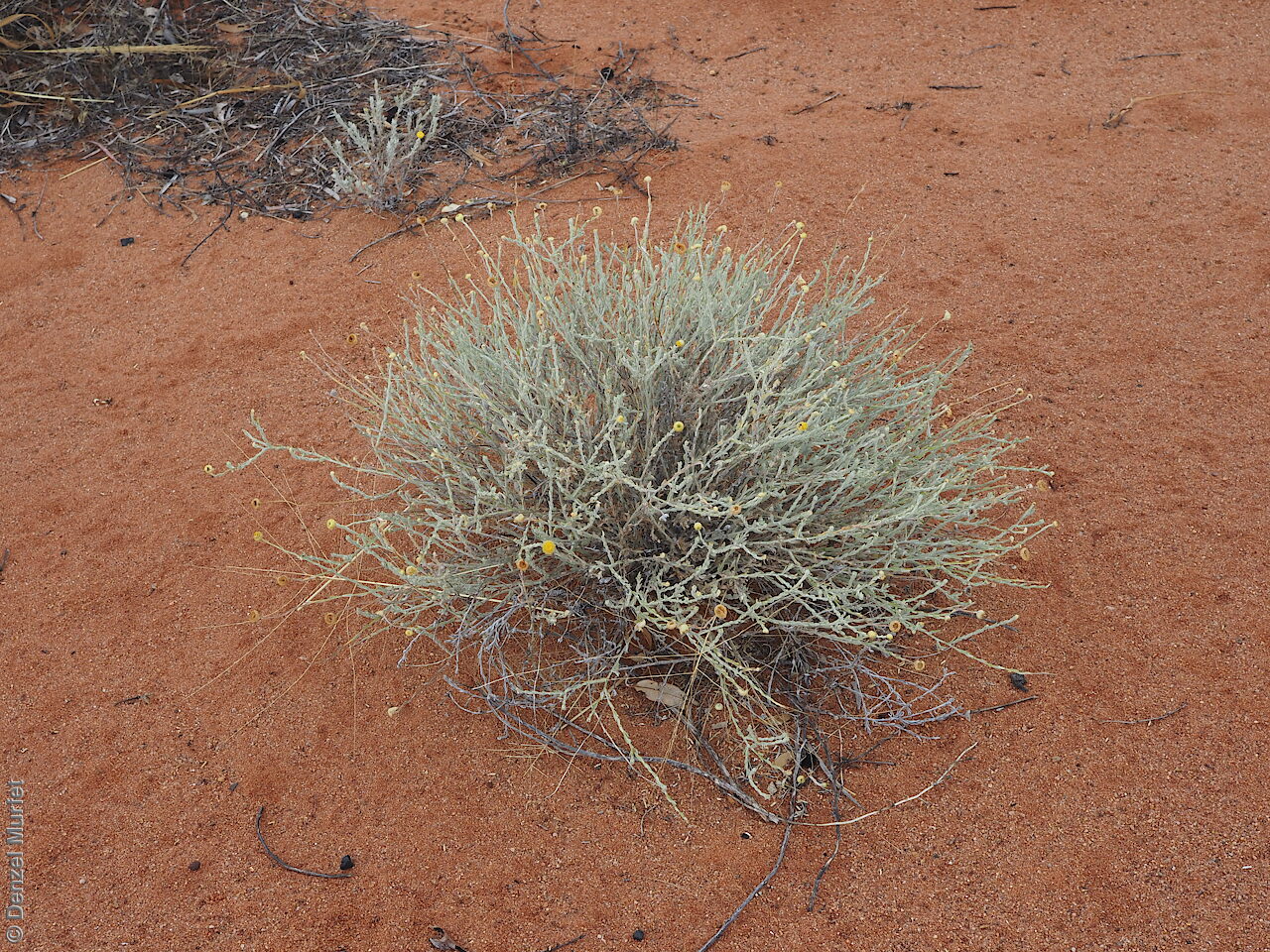
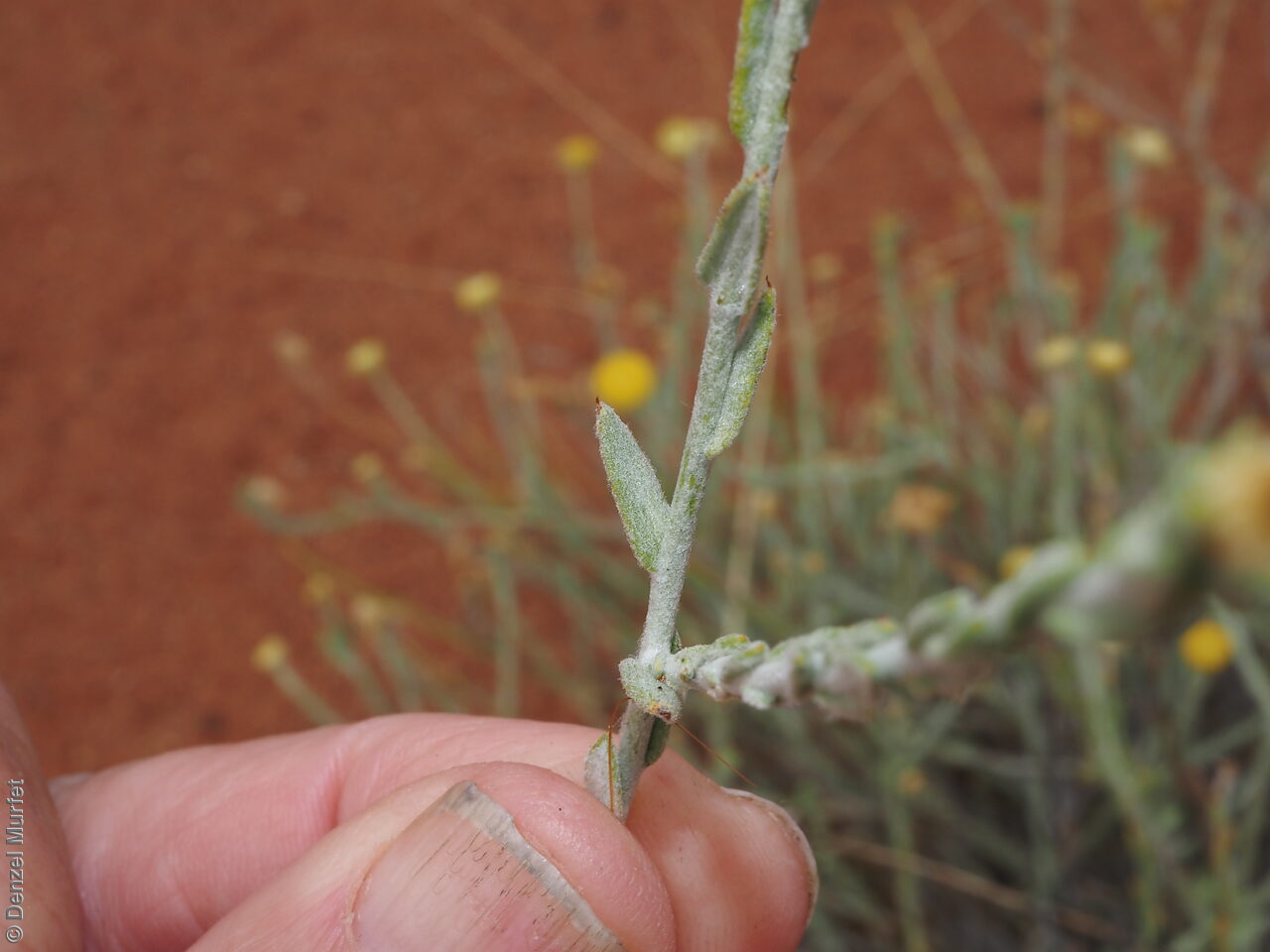
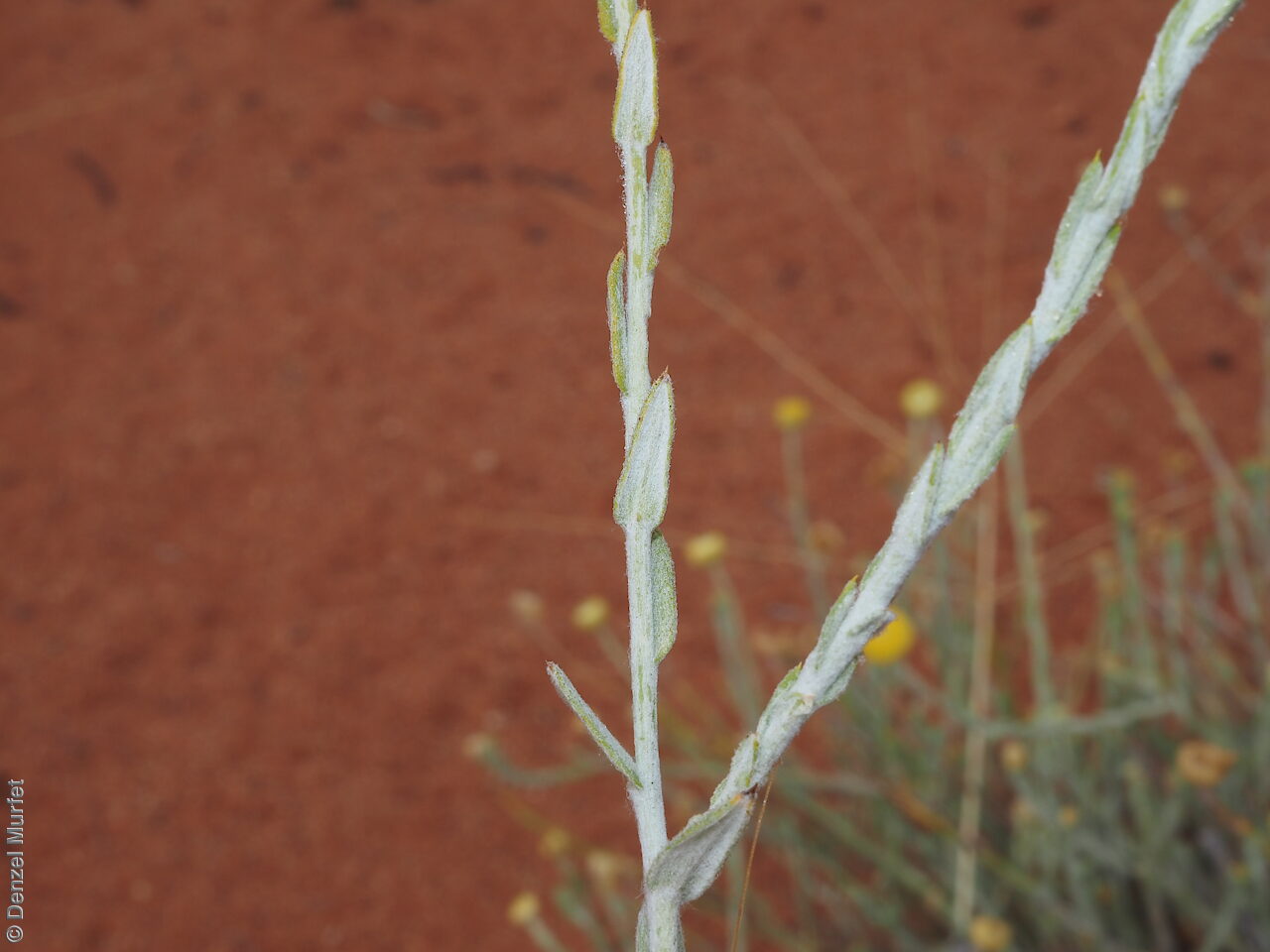
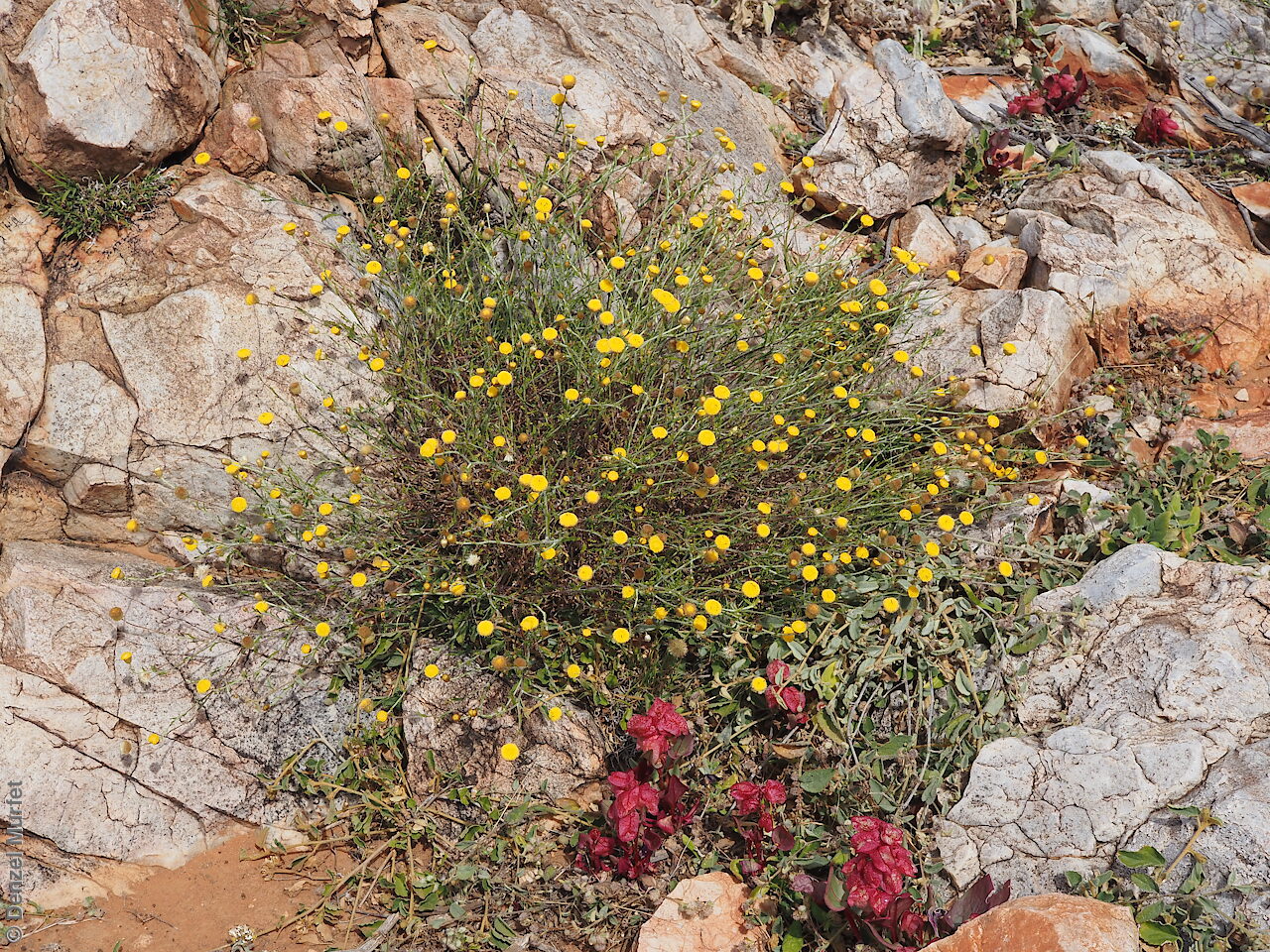
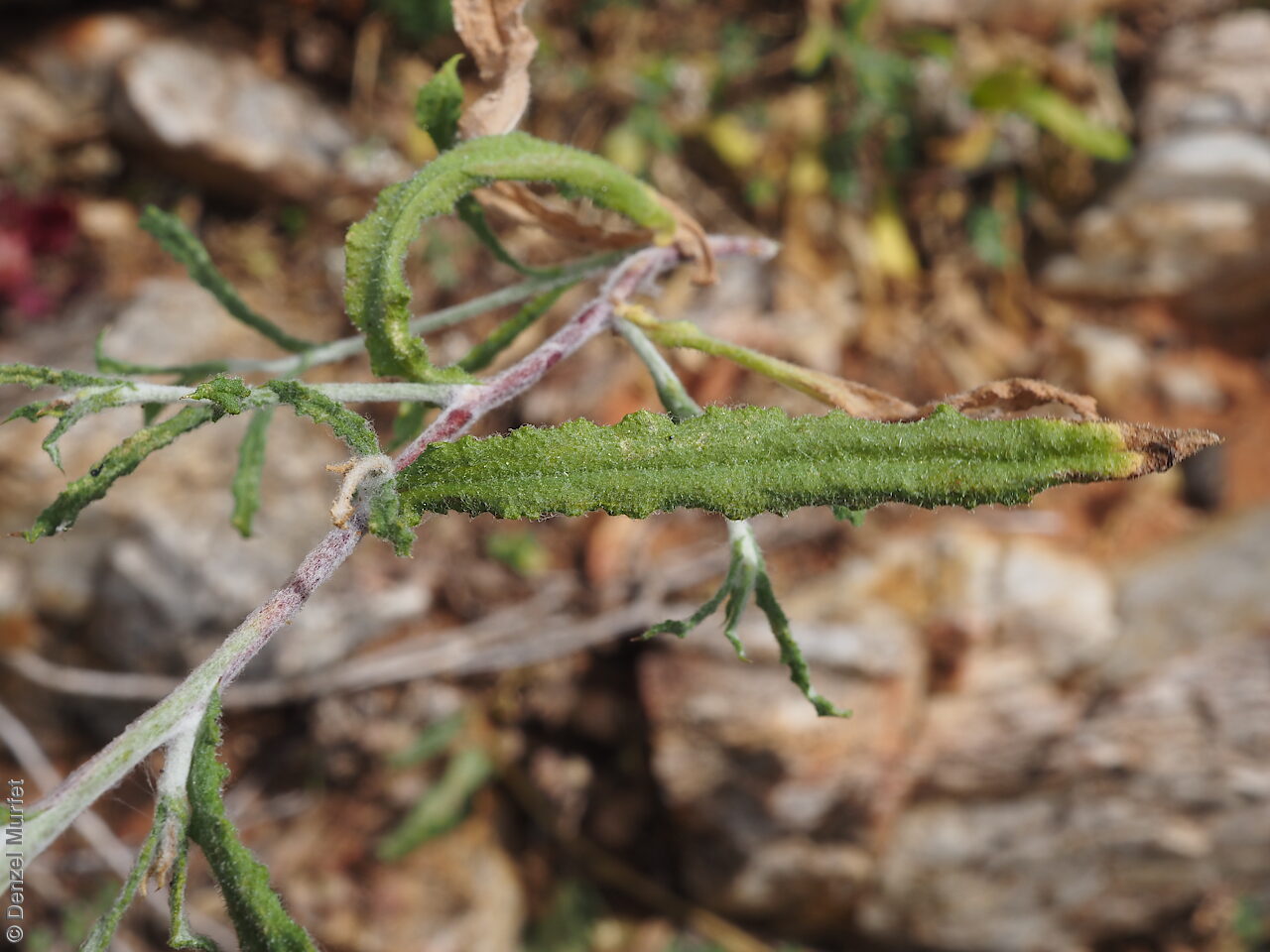
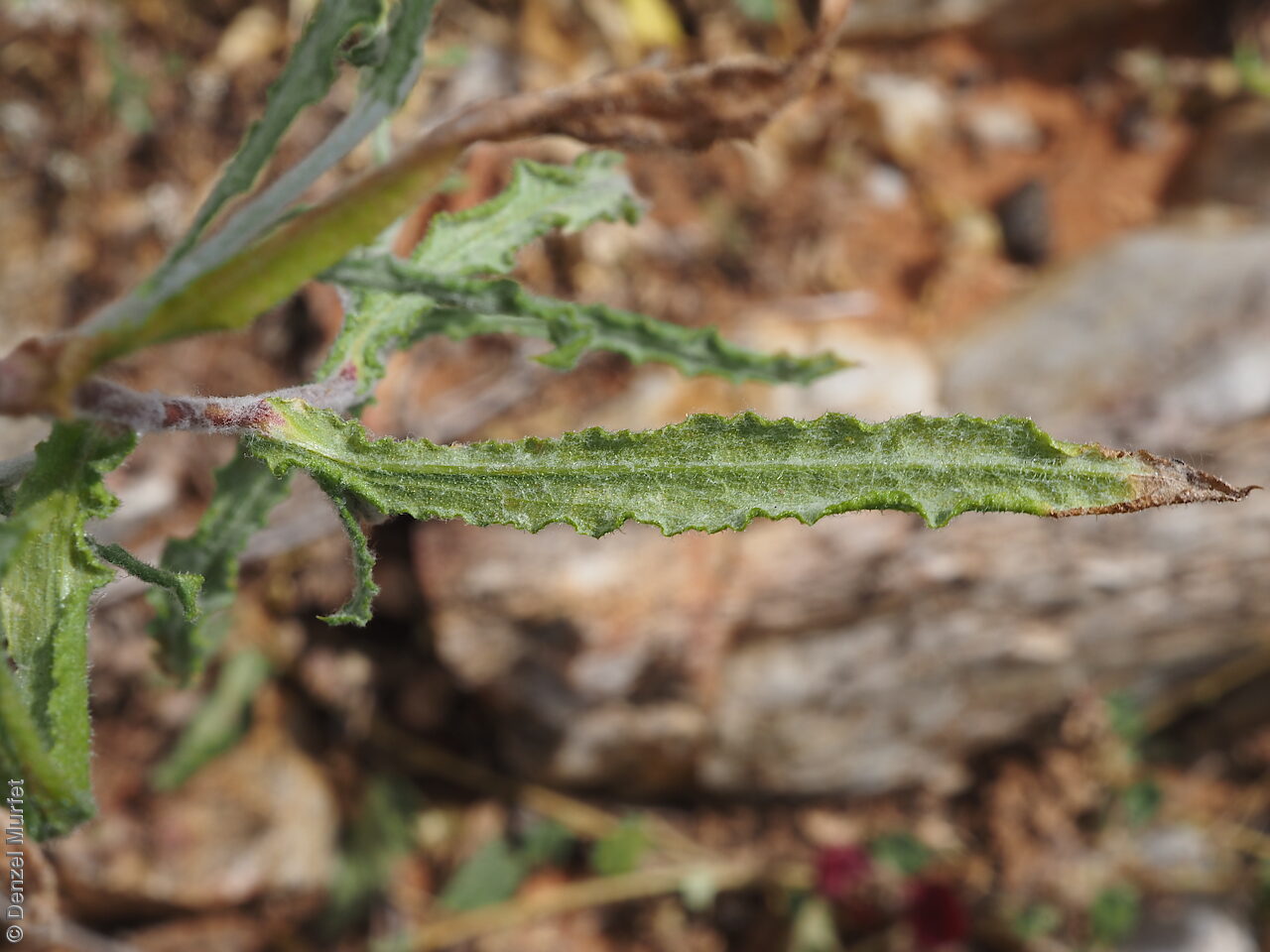
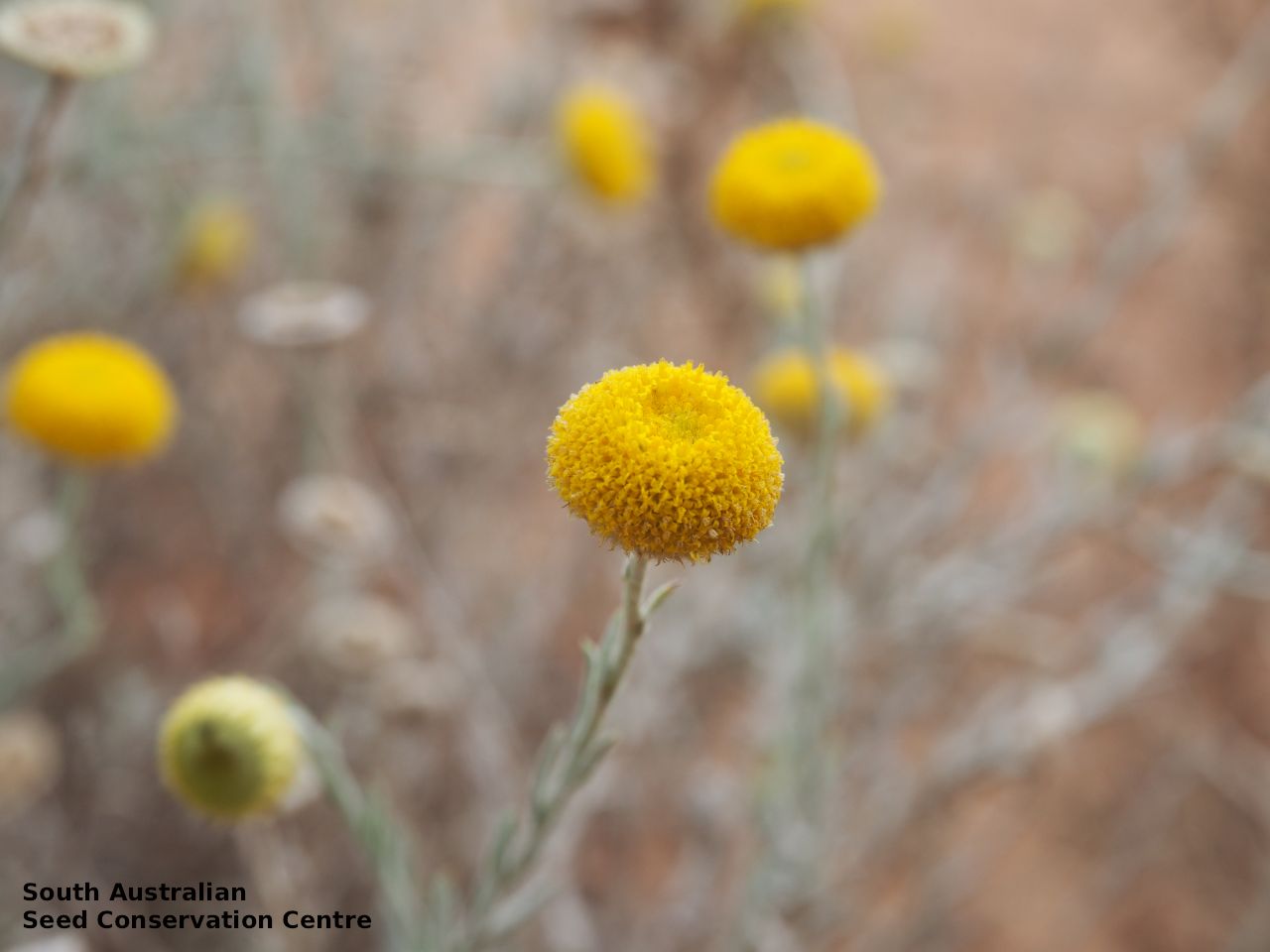
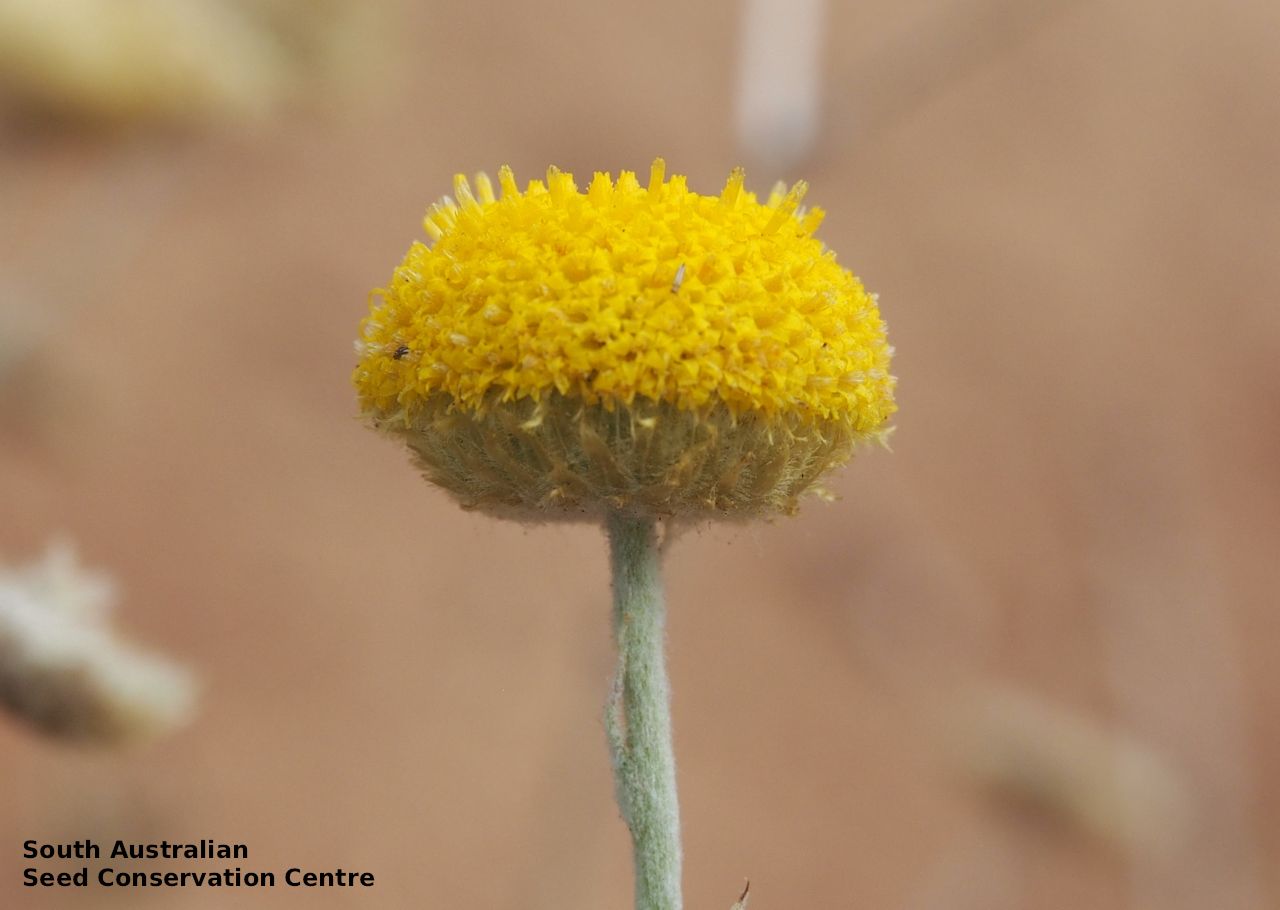
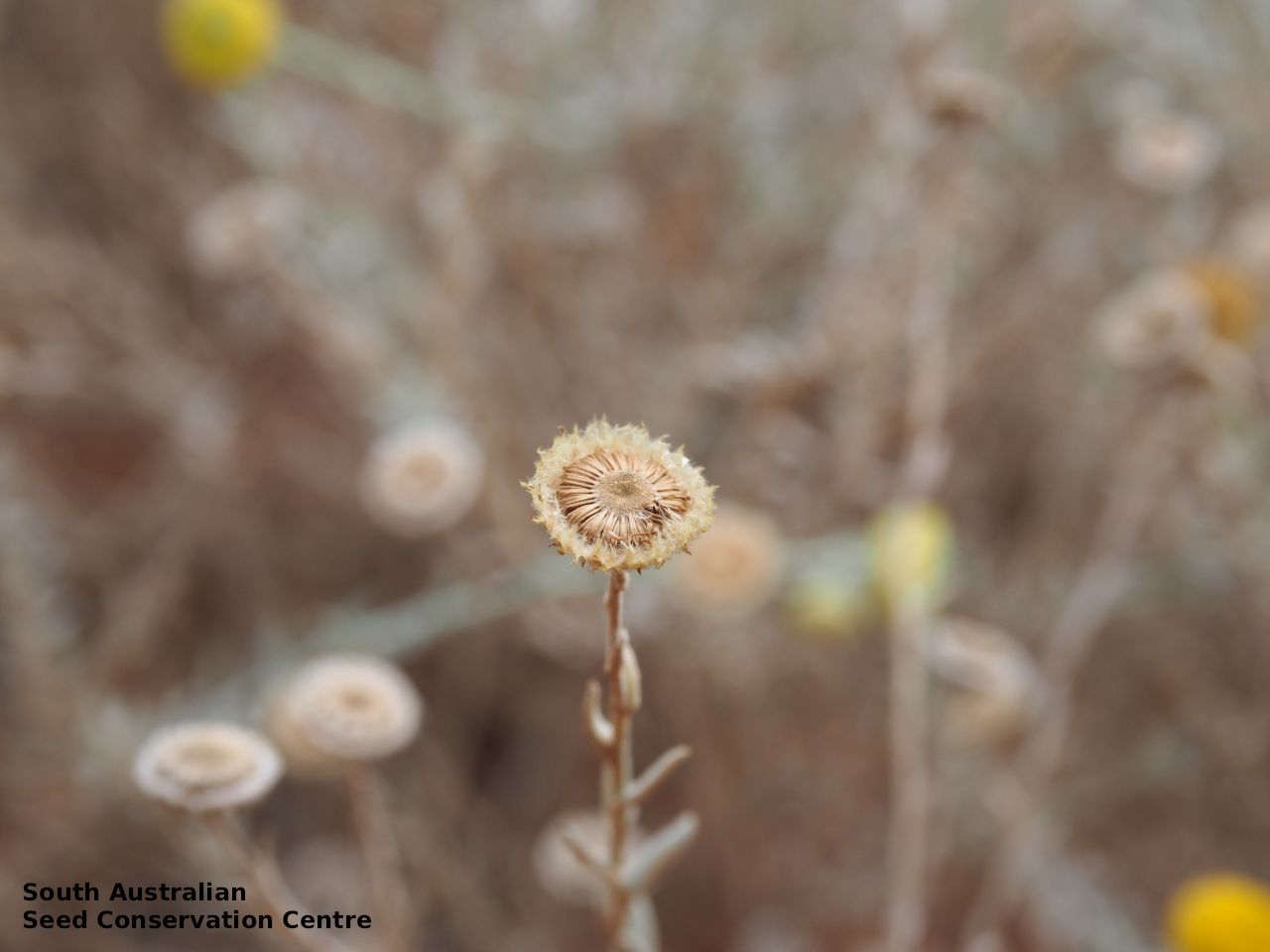

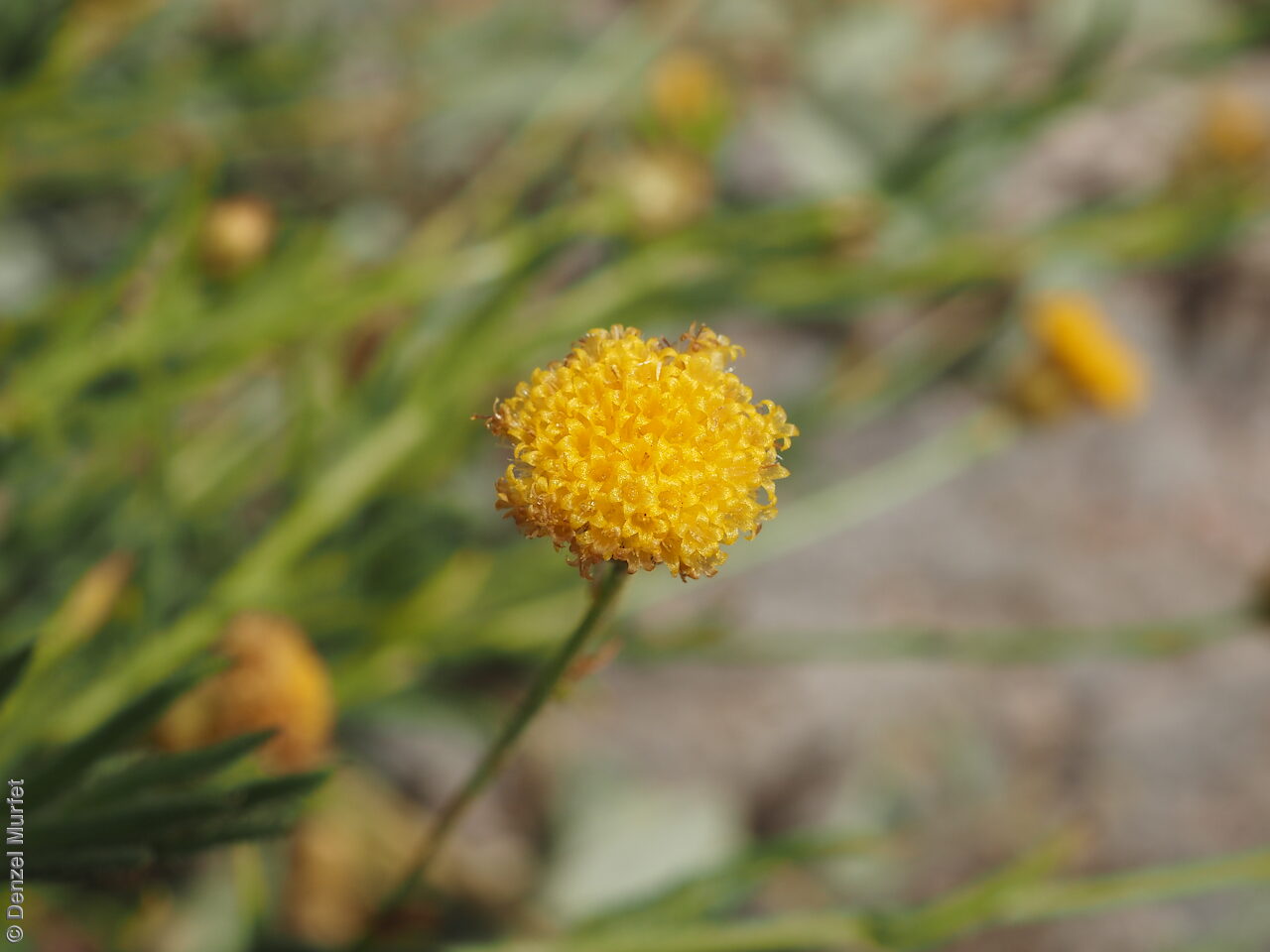
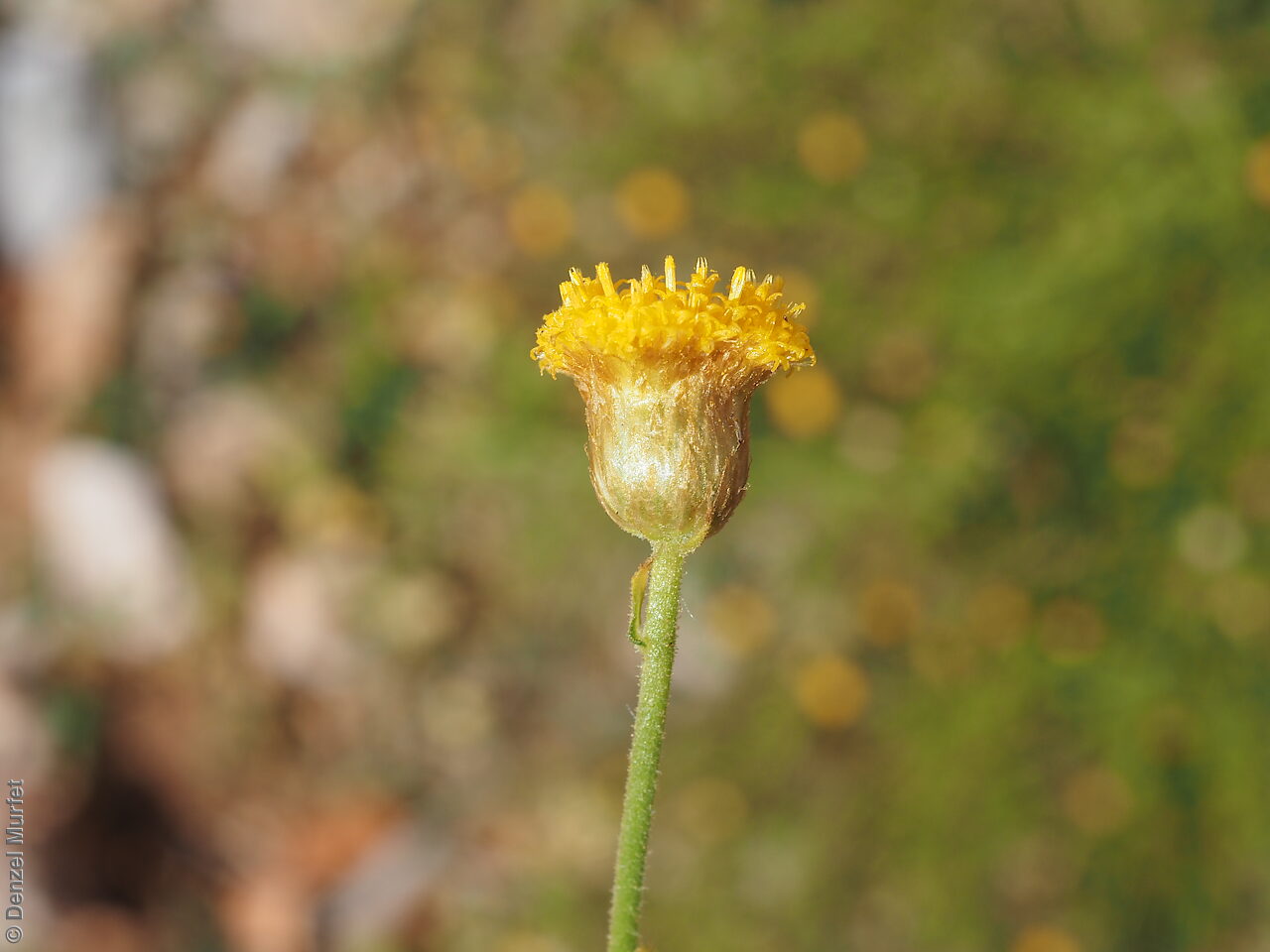
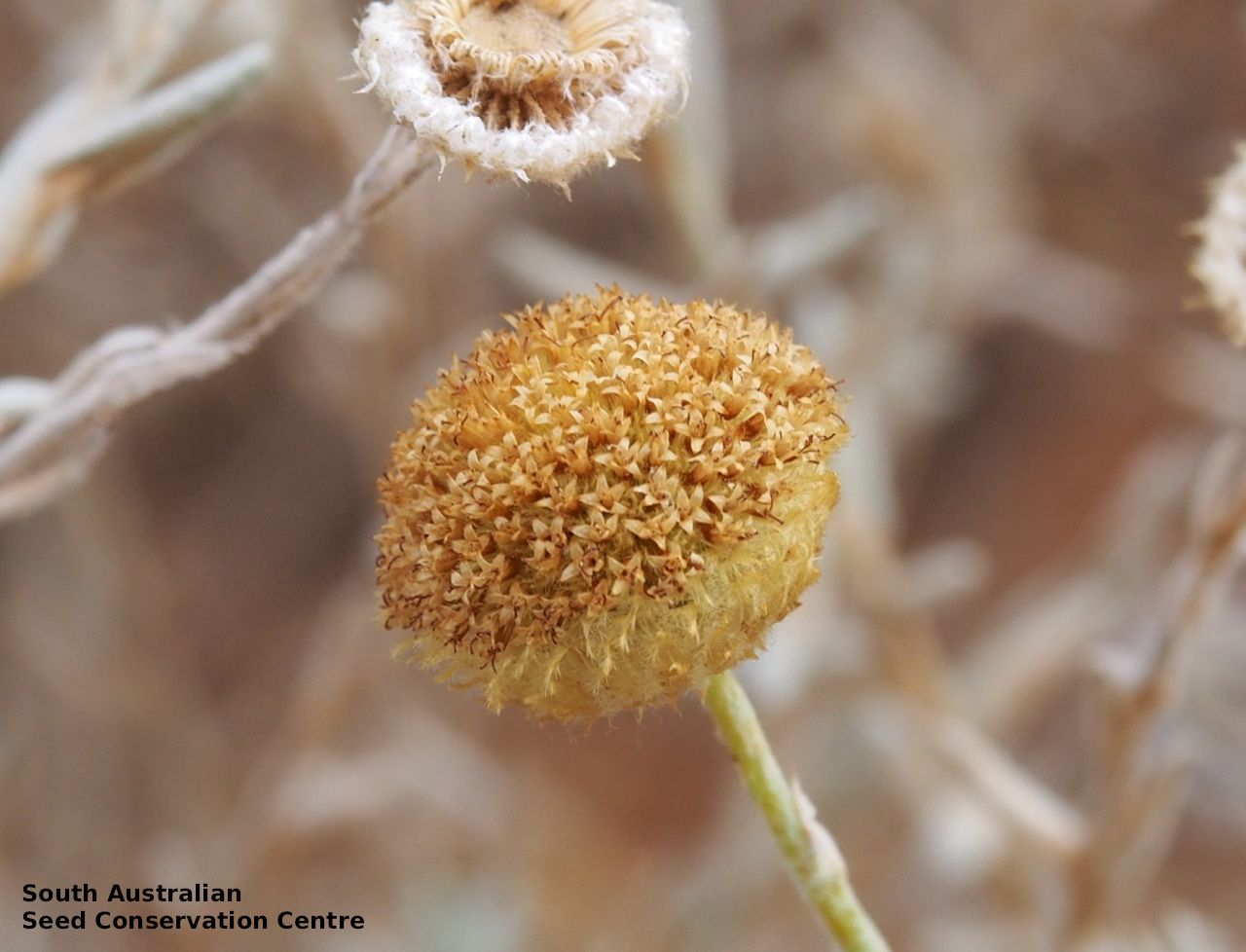
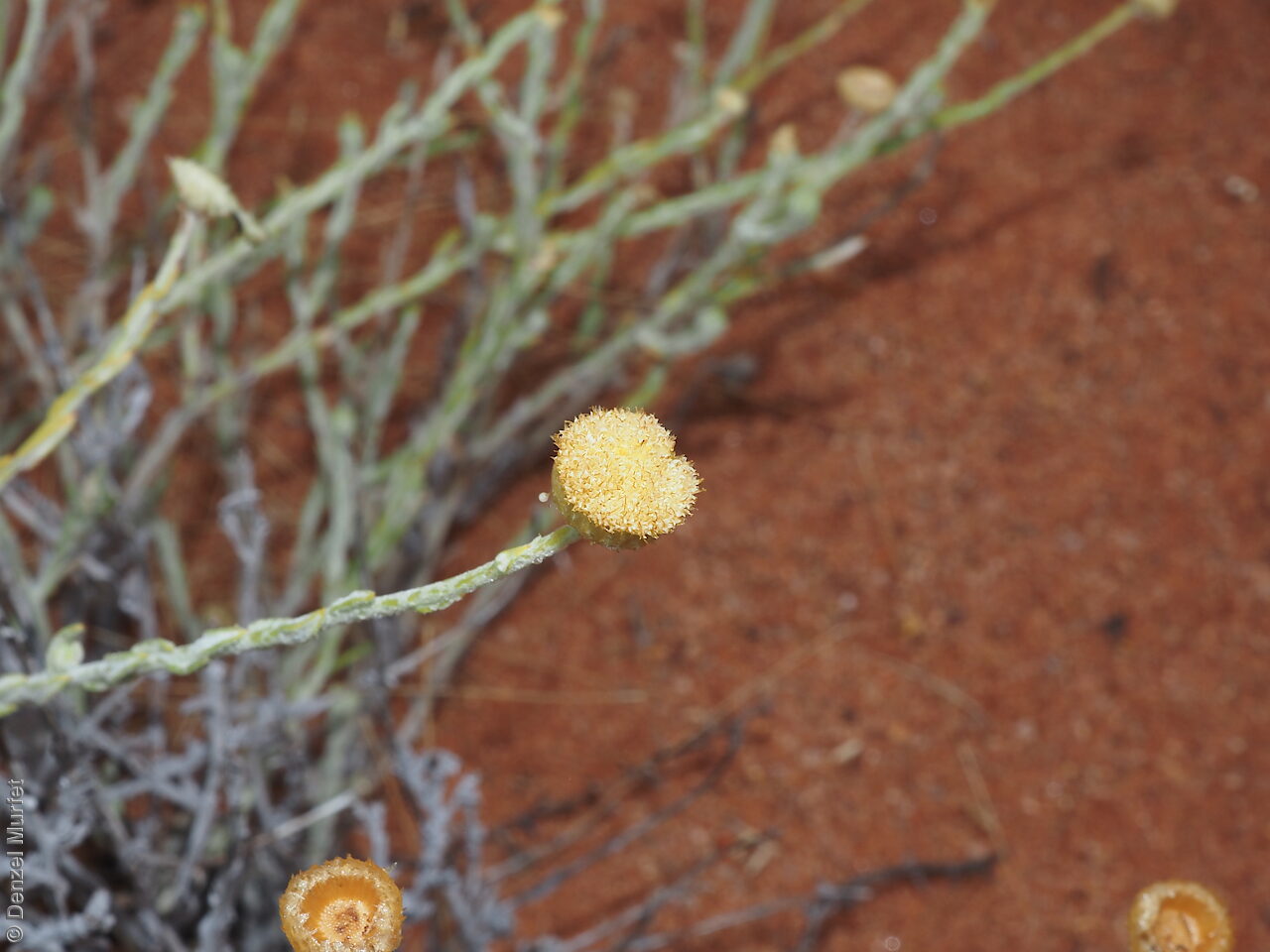
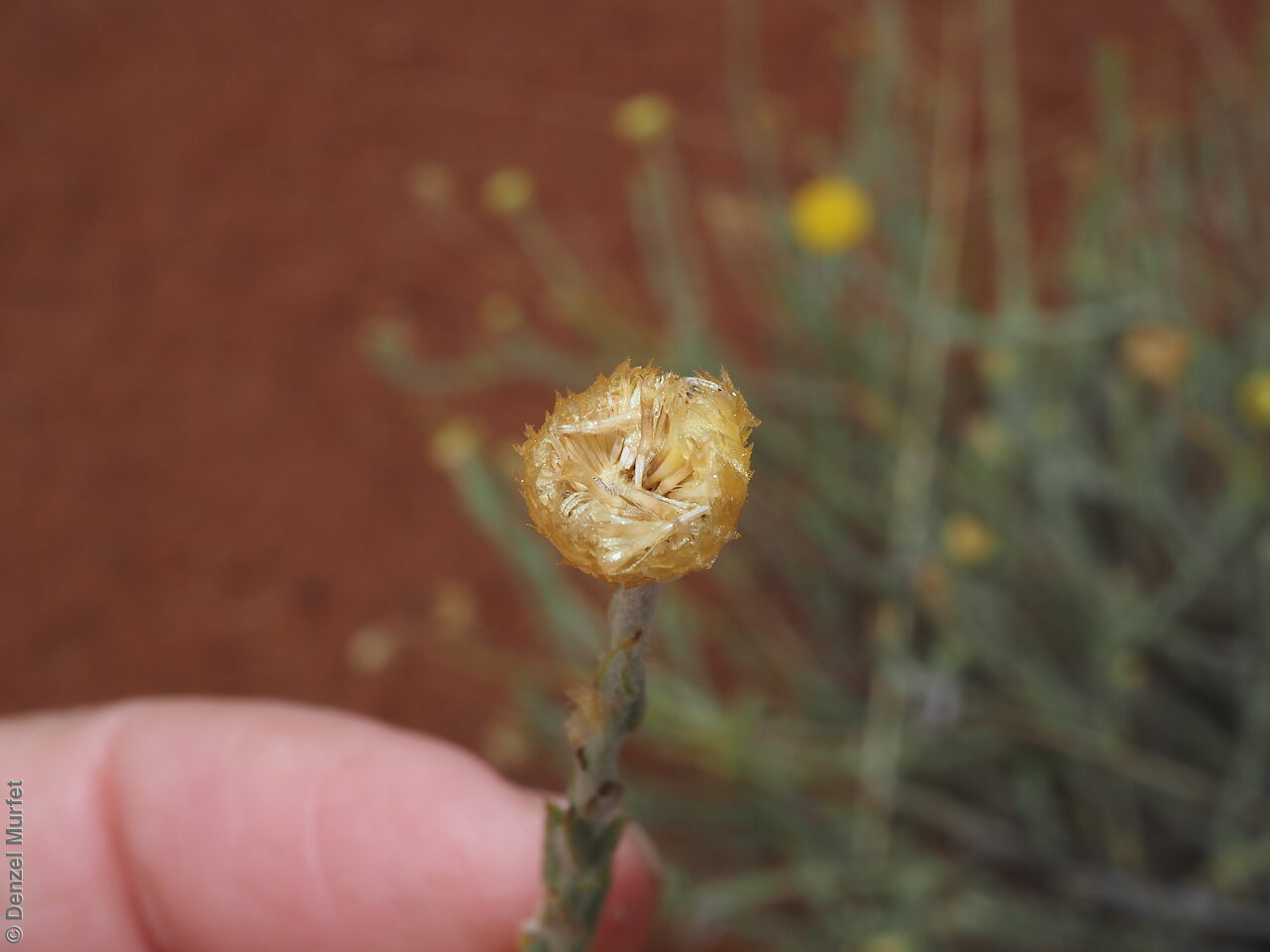
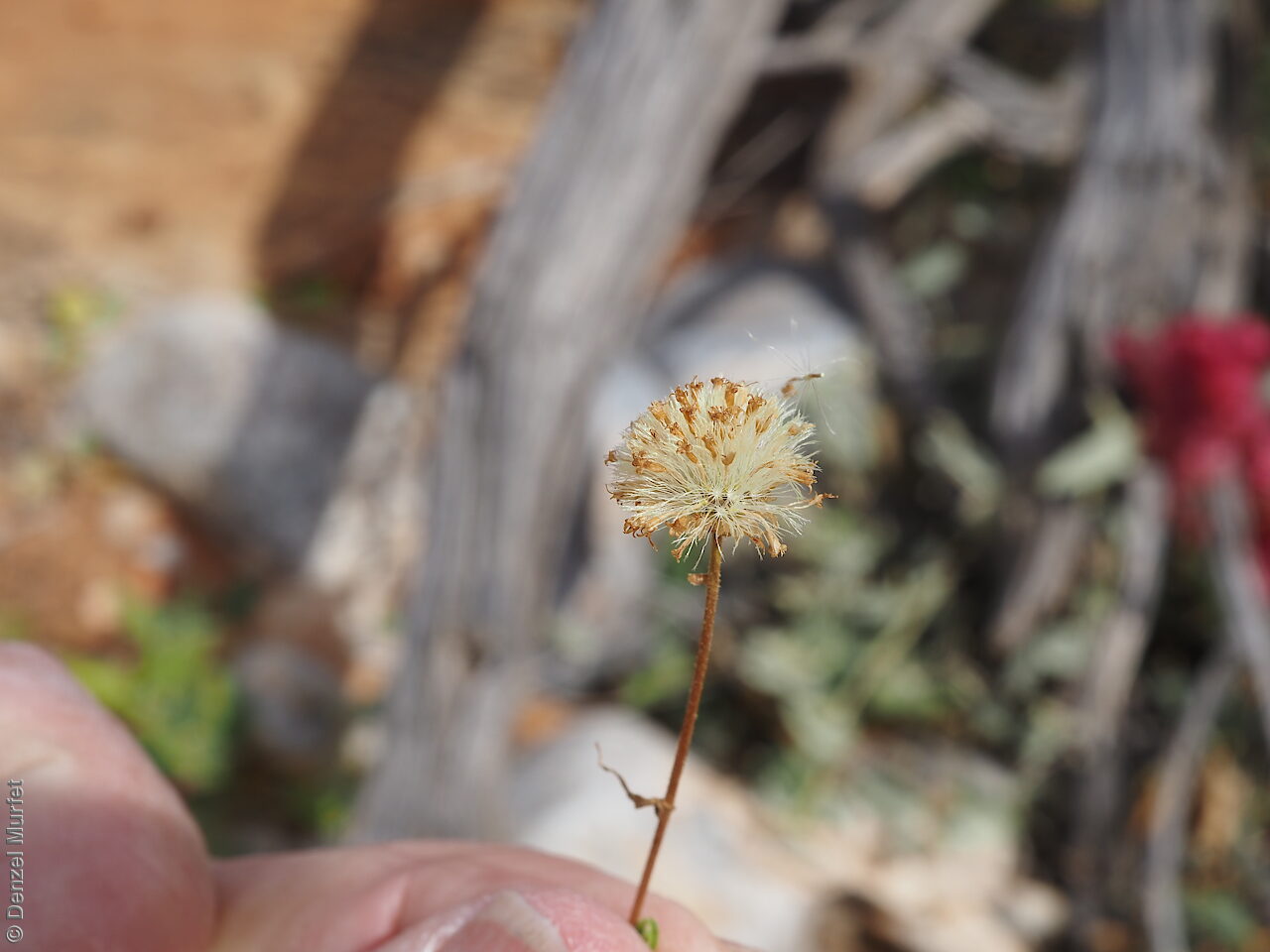
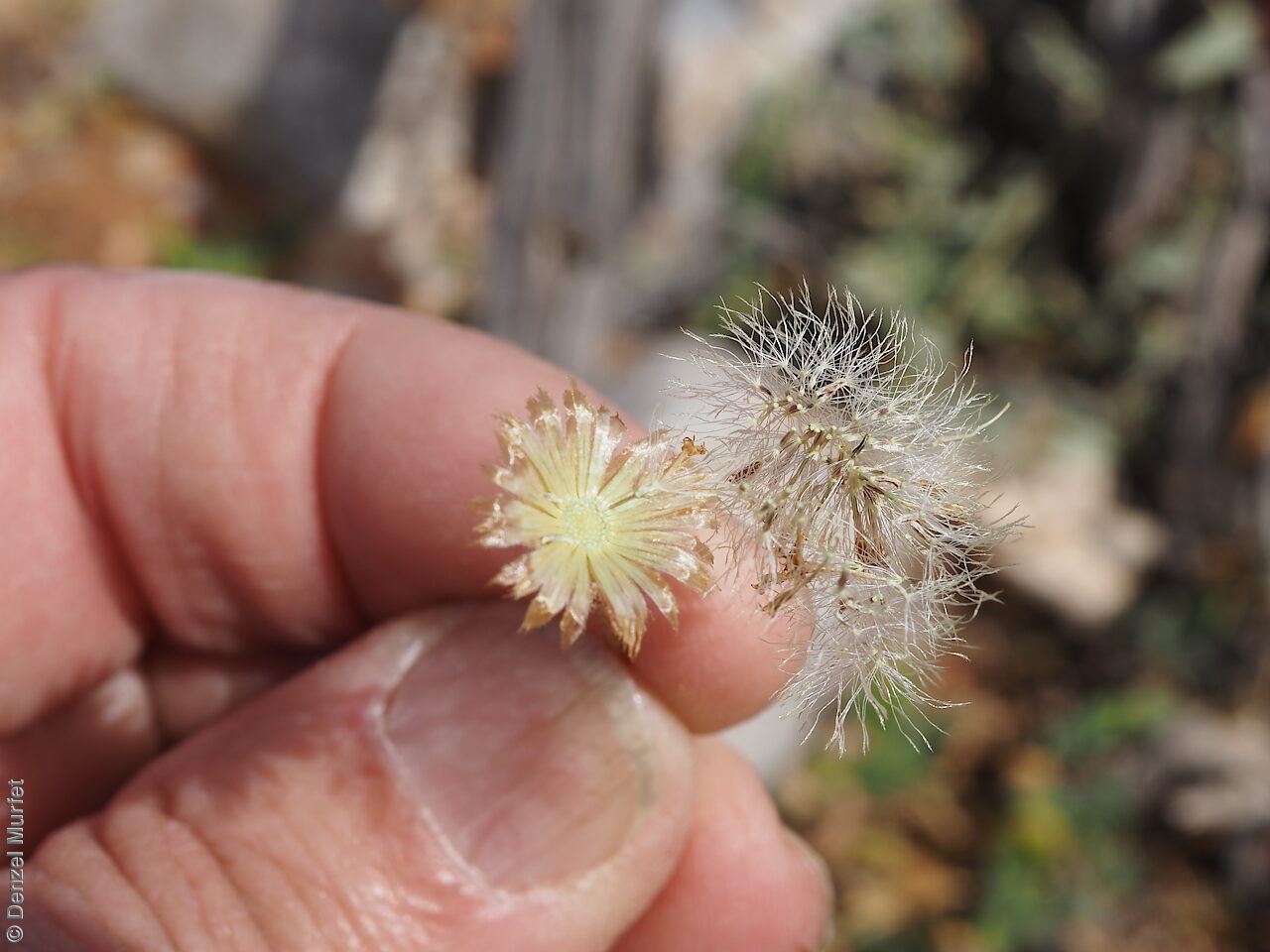
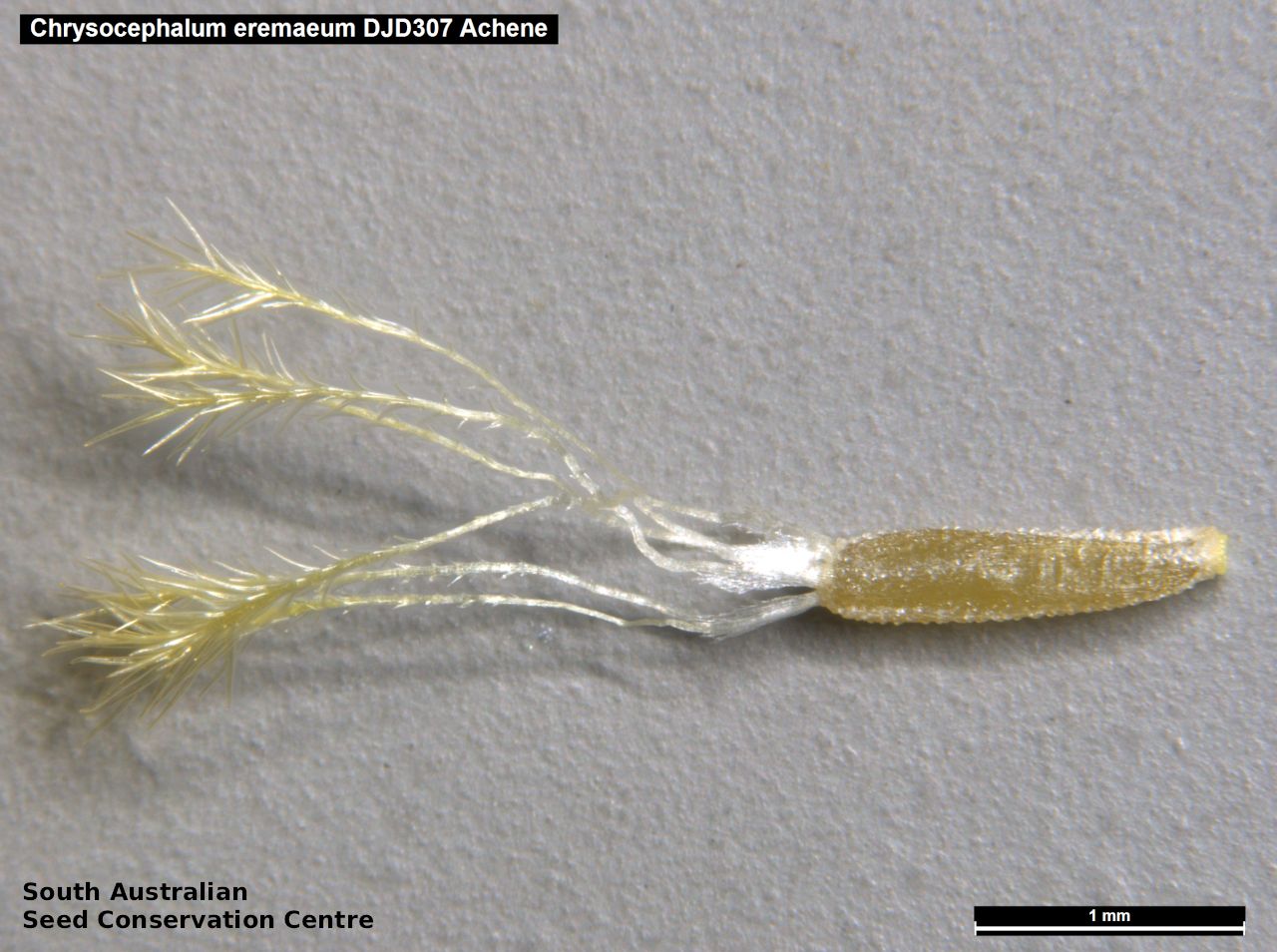

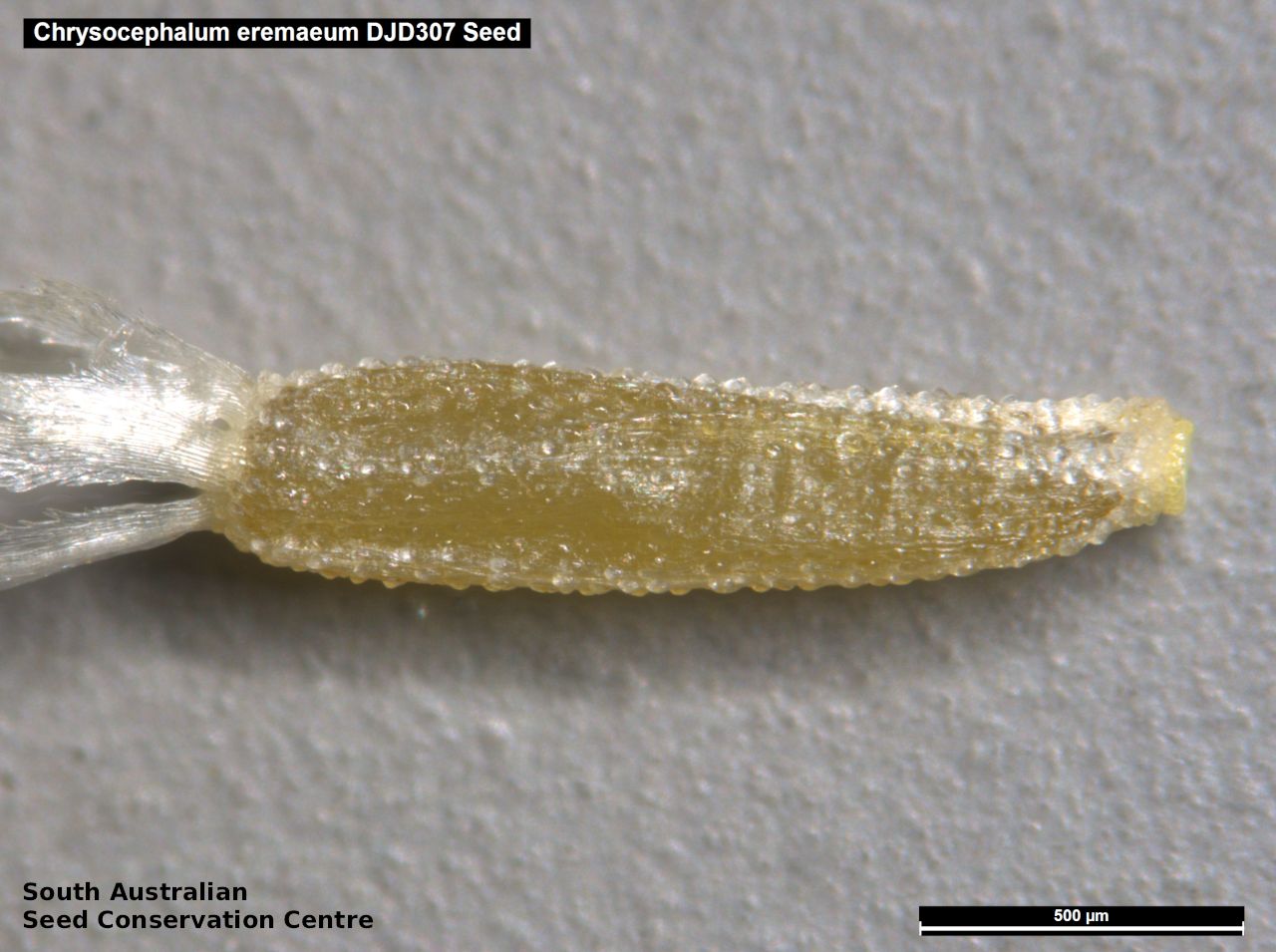

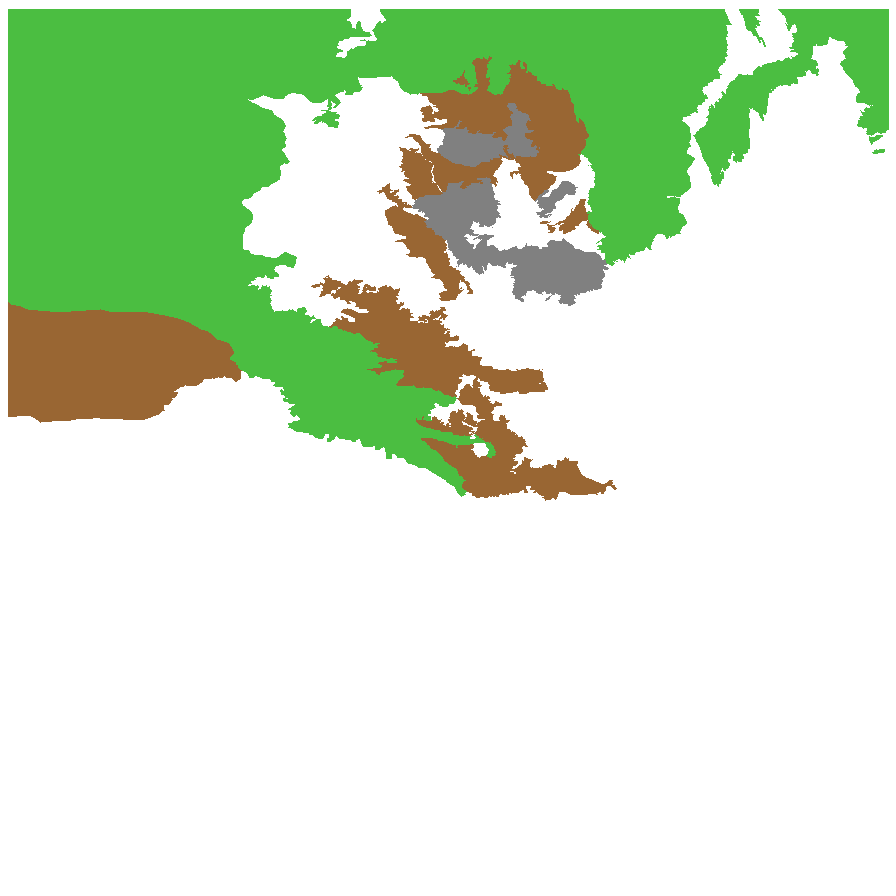
Botanical art
Prior names
Helichrysum ambiguum var. paucisetum
Helichrysum eremaeum
Common names
Dryland Button-bush
Sand Button-bush
Etymology
Chrysocephalum from the Greek 'chryso' meaning golden and 'cephalus' meaning a head, referring to the golden flower heads. Eremaeum from the Greek 'eremaios' meaning solitary, referring to the single terminal flower on the stems.
Distribution and status
Found northern South Australia growing in open sites on sand dunes and sandplains on red sand and rocky soils. Also found in Western Australia, Northern Territory and Queensland. Native. Common in South Australia. Common in the other States.
Herbarium regions: North Western, Lake Eyre, Nullarbor, Gairdner-Torrens, Eyre Peninsula
NRM regions: Alinytjara Wilurara, Eyre Peninsula, South Australian Arid Lands
AVH map: SA distribution map (external link)
Plant description
Much-branched herb to 40 cm tall with a perennial rootstock; stems and branches covered in dense woolly hairs. Leaves linear to oblanceolate with a recurved, sometimes undulate margin; acute to apiculate apex, and a broadly sessile base, mostly to 15 mm long and 3 mm wide; glandular-scabrid with woolly hairs, especially on the underside. Flower-spike at the tip of a stalk with a single golden-yellow daisy-head. Flowering between July and September. Fruits are pale brown fluffy daisy-head. Seeds are pale brown oblong seed to 2.5 mm long and 0.5 mm wide, covered in small tubercules and with long feather-liked pappus. Seed embryo type is spatulate.
Seed collection and propagation
Collect seeds between October and January. Collect whole heads that are brown and fluffy or collect just the seeds by plucking it off with your fingers. Mature seeds are easily removed. Place the heads in a tray for a week to dry. Then pluck the seeds from the head with your finders. Viable seeds will be fat and brown. Store the seeds with a desiccant such as dried silica beads or dry rice, in an air tight container in a cool and dry place. From one collection, the seed viability was average, at 50%. Seeds are non-dormant, viable seed should germinate readily.
| Location | No. of seeds (weight grams) | Number of plants | Date collected | Collection number Collection location | Date stored | % Viability | Storage temperature |
|---|---|---|---|---|---|---|---|
| BGA | 207,000 (15.53 g) | 8-Dec-2005 | DJD307 Gairdner-Torrens | 14-Sep-2006 | 50% | -18°C | |
| BGA | 21,800 (2.58 g) | 30+ | 29-Sep-2007 | DJD892 Lake Eyre | 19-Sep-2008 | 95% | -18°C |
Number of plants: This is the number of plants from which the seeds were collected.
Collection location: The Herbarium of South Australia's region name.
% Viability: Percentage of filled healthy seeds determined by a cut test or x-ray.